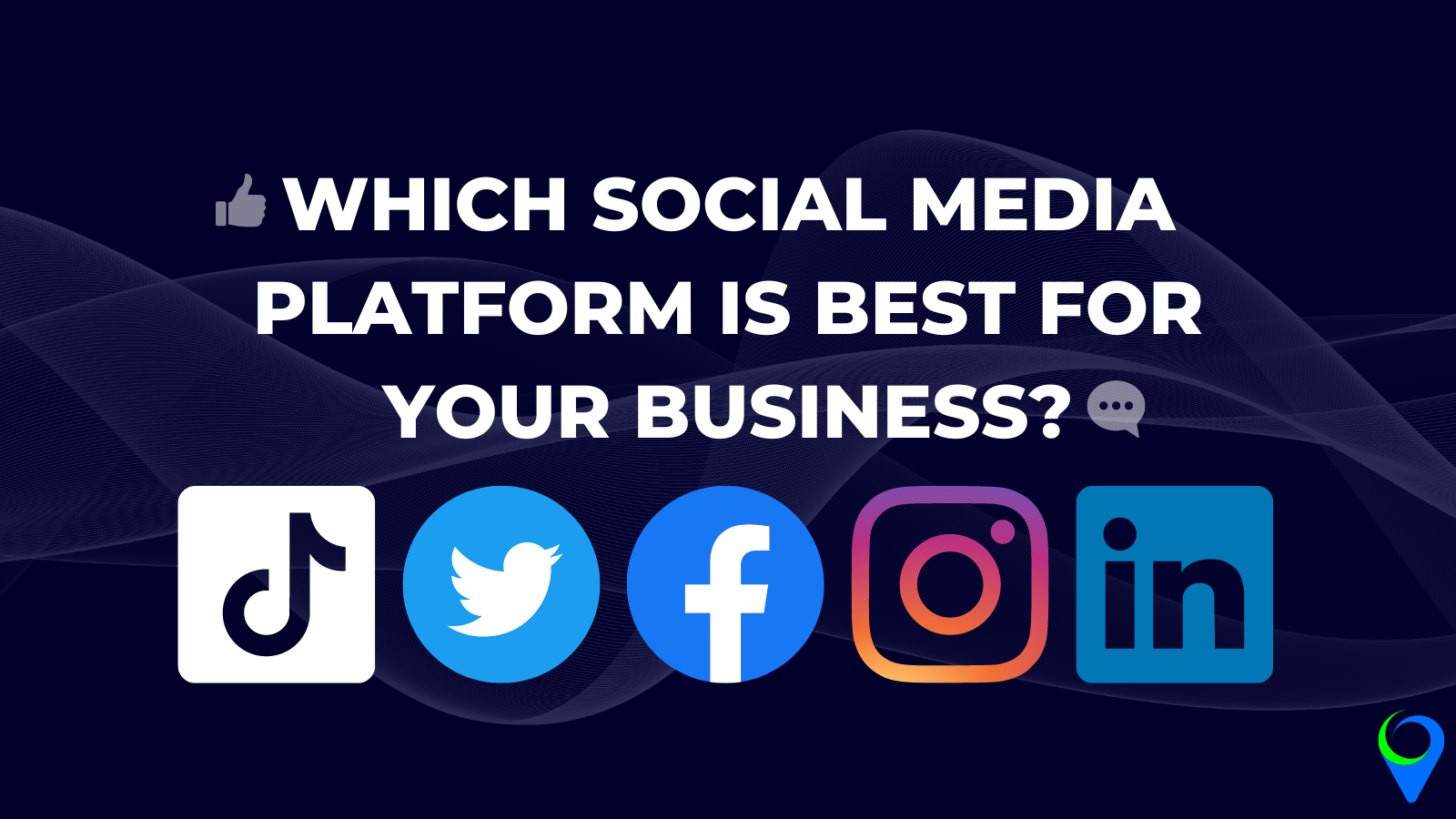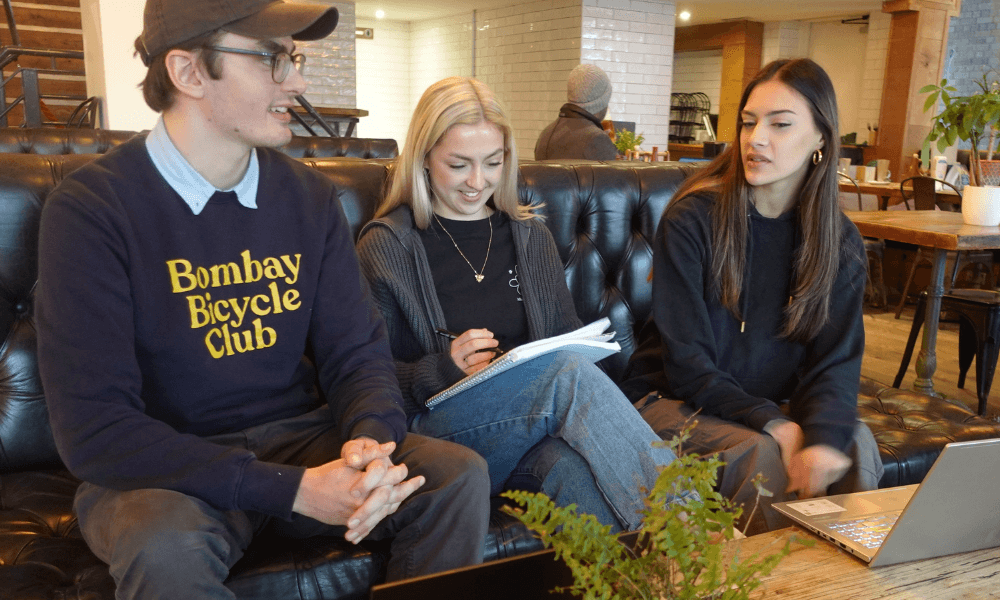6 min read
Why Traditional Marketing Is STILL As Important as Digital Marketing
You may think we have gone mad, but we haven’t (honestly). Still, we firmly believe at LoudLocal that any genuinely effective strategy should...
Got a question, or need help with something?
A member of the LoudLocal team is on hand to help you.
The Brickyard, Unit 2, Queen's Rd, Kenilworth, Warwickshire, CV8 1JQ
5 Merchant Square, Paddington, London, W2 1AY
8 min read
Leon Hidderley
:
Jun 9, 2021 9:17:20 PM
We decided to write this article as we regularly get contacted by businesses who are looking for support with social media. But sometimes we talk people into having training instead, so they take a DIY approach. Why? Because it really isn’t as complicated as it may sometimes be made out. The main issue seems to be a lack of confidence and a misinterpretation of how social media works. As an agency, we also feel like we are doing our customers a disservice by charging them for something that on paper is so simple.
To remedy this, we’ve put together a social media guide on how you can (quite easily) improve the performance of your campaigns. You don’t need to be a digital marketer whizz to get the best out of your campaigns. Just knowing a few tips and tricks will make the biggest of differences.
Absolutely not. Agencies are a great way of adding value to what you already know and do. Agency partners play a vital role in improving the performance of your campaigns and can help with more complex areas such as maximising conversion rates, content creation or in-depth analysis. However, if you are not doing the basics then you may end up paying for something you could do yourself.
.webp?width=601&height=338&name=Social-Media-Guide-for-Small-Businesses-1%20(1).webp)
Taking a DIY approach will put you in a much better position if you do decide to utilise an agency for social media marketing. It will save you substantial time and make it easier for you to understand what your agency is doing. Furthermore, it helps you interpret the results and improve your working relationship with your agency partner. So what’s stopping you?
To help you get started, here are our top tips if you are considering taking a DIY approach (acronym free).
One of the biggest mistakes a lot of small businesses make is not taking advantage of the boosting functionality included on most platforms. In an ideal world, you would post something and it gets seen by everyone who has ever interacted with your brand. Unfortunately, we are not in an ideal world and even if you have 1000s of page likes then you will be lucky if it gets seen by more than a few people.
Social media has changed dramatically through the years. In 2021 if you are not a content creator (more on that below) then it is unlikely you will get organic (unpaid) reach. Why? Because social media platforms like Facebook also have to make money and their main source of revenue are advertisers. If they were to let businesses reach people for free then how would they justify charging businesses who spend money with them? This is why the content you have spent your time creating only gets seen by a small group of people. In my career, I’ve heard some businesses claim that their customers don’t like engaging on social media. This is why they never get any engagement. Whilst this may be true if it is only getting seen by six people then how could you know for certain? So chuck out your assumptions, and let’s dig in.
.webp?width=599&height=337&name=Boosting-on-social-media-for-small-businesses-1%20(1).webp)
First, let’s explore the difference between content creators and advertisers. Understanding the difference will help you establish why some people still get that all-important (organic) reach.
Content creators are the people/organisations that produce content for social media. For example, this could be a dog falling in some water or an interesting cookery video. The difference between a content creator and a business is that the content produced adds value to the platform user. It encourages people to use the platform because people like to see interesting content in their feeds. The content posted on the platform (e.g. Facebook) will reward people who post interesting and engaging content with more reach/likes and engagement. Content creators use social media as a revenue stream and are incentivised to continue making content for their platform. Popular content creators can also earn money from advertisers by serving as influencers.
However there is a caveat, if you are a brand that is trying to actively sell something, then the lines get blurred a little. Even if you are producing interesting content, it is likely that your content will need a bit of a spend behind it before it starts to reach people. The main reason why is you are actively trying to promote/sell a service and you are a business whose main aim lies outside of content creation. So think carefully about what you are trying to do via social media. If you are trying to create brand awareness, tell people about an event, generate leads or share a message about your brand, then it’s time to click that “boost” button.
.webp?width=601&height=338&name=Content-creator-for-social-media-using-a-dog%20(1).webp)
Go ahead and click it. Nowadays it is so easy to select an audience, set your budget, choose an objective and even add additional features such as “learn more” buttons. Unlike the business manager/suite that marketing agencies like us use, the boosting tool is designed for businesses with little or no marketing knowledge. Everything is explained at each step in detail and most platforms do a great job of making things as simple as possible.
For lead generation campaigns you can even go a little further by adding pixel tracking (simply adding a small amount of code on your site so you can track conversions). But this ups the complexity a bit. It’s nice to have but not an essential requirement.
You would think you need to put £100s behind a post but that just isn’t true. Even just £1 will help your post reach a much wider audience and as a result, expect your engagement/click-throughs/share to increase. We boost all of our posts as we want people to see the content we have produced (like this article), but we rarely spend over £5.
A tip is to start small because if the platform sees you are willing to spend big sums at the start, then drop the budget afterwards then the campaign performance drops significantly.
Nothing impacts your campaign performance more than having rough-looking content. If your ad/post looks like it was created on a PC from the early 90s then you can be sure that users just won’t engage. The best way to get this right is to make sure your image or video meets the minimum size guidelines for each platform (and sometimes the aspect ratio). This is forever changing and can be hard to keep up with, but Hootsuite produces a great guide that can be used as a quick reference.
Aspect ratio content will appear better on some platforms if you maintain the right aspect ratio. Instagram for instance uses 1:1 (square) for the feed. Instagram stories however use a different aspect ratio as they appear in portrait(1080 x 1920). Whilst you can upload different sizes, your images may be clipped or appear incorrectly. Something which can be problematic if you have text in the image.
Up until recently, Facebook used to actually penalise businesses who went a little text crazy, there was even an image/text ratio calculator that you could use to get it right. They changed course on this recently, but guidelines still exist and large amounts of text are not recommended.
Even without Facebook penalising you it is still good practice to keep text to a minimum. The number of people who engage with your ad will decrease dramatically if you go overboard. Social media users skip through content and just won’t read an image plastered with text.
Remember that when people use social media they don’t spend hours reading each post from top to bottom. If something looks like a hard read or very busy then most users will simply scroll past the content.
Instead, focus on adding what you want to say to the text box at the top (if you grab users attention they can always click read more). Use text in images wisely for things such as headers or logos, but keep it clean. And finally, focus on using a vibrant image that really grabs peoples attention, after all a picture says 1000 words.
.webp?width=600&height=321&name=Bad-social-media-post-example-with-lots-of-text-1%20(1).webp)
Emojis are a great way of conveying emotion in posts because they can help set the tone of what you are talking about. If you are trying to be humorous then add a smiley, if the point is quite a sad one then use a not so smiley. However, there are limits and if you’re not careful you can quite quickly go overboard. Don’t go crazy with the emojis and keep this to around 2 emojis per post. Adding too many emojis can have the same impact as saturating your images with text.
Think of exclamation marks as a virtual high five. If you have something really great to say then by all means go ahead and use one. But keep it at that. Imagine how annoying it would be if every five seconds someone said “high five”? Well, it’s the same principle online with your virtual high-fives. Seriously, stop it…unless of course, you are Borat, then carry on!
.webp?width=599&height=337&name=High-five-with-Borat-stop-using-exclamation-marks-1%20(1).webp)
One of my favourite models for creating content that is easy to understand is AIDA. AIDA is a model that originated in the early 20th century and despite predating social media by 100+ years remains very relevant. AIDA stands for Attention, Interest, Desire and Action. Apply this model to your posts, it’s a great way to ensure your content flows. It is especially effective if you are embarking on a lead generation campaign that has a clear call to action.
Here is an example of how you can apply AIDA for a social media campaign:
Use an attention-grabbing headline to really get people’s attention. Something that stands out and potentially ends with an emoji. An example would be “We have some interesting news!📰”.
This is a continuation of the above, flesh out what you have just grabbed people’s attention with and expand on it to keep people reading. A good example that links with the headline above would be “We are moving to a brand new location in place name”.
You guessed it, this is continuing the flow by expanding on the above and further fleshing out peoples interests, the aim is to get them really interested in what you have to offer and connect with potential readers. Make them want to read more, make it exciting and interesting. So continuing our theme, you may use something like “Our new location is bigger, with four times as much stock and a show-stopping interactive demonstration never seen by human eyes before”
Now you have grabbed people’s interest it is time to send them on to the next stage of their journey. Think about what the objective is and what action you want them to take. Is it to sign up for an event, share the content, or maybe you want them to view a landing page? Regardless of the goal, you need to give people that push to take that next step to give purpose and a reason to continue. Incentives are a great way to do this, tell people what is at the other end and why they should take this action. It doesn’t need to be a cash-based incentive, just something that makes taking the next step worthwhile. To finish off this could be “First 200 in-store will receive an exclusive one to one demonstration (worth £200) – register now to avoid missing out…
And there you have it. A quick and easy post that is bound to get people talking/sharing and liking:
.webp?width=599&height=337&name=Social-Media-Placements%20(1).webp)
We hope you have found this article useful? It may seem a little complex at first but following the tips above will really help improve your business’s social media performance. Plus you can save a small fortune on agency fees by taking a DIY approach!
If it has left you with a thirst for more then lookout for future articles that expand on some of the more complex areas. Subscribe by popping in your details below to ensure you don’t miss out.
As mentioned we are an agency and yes, we do sell social media services.
Maybe you have read and mastered the above, and need to take it up a notch. We can either support your business as an agency partner or provide one to one training in the more complex areas.
Or you may be absolutely stacked with work and just not have the time to do any of the above.
Not a problem, if you fall into any of the above categories then we would be delighted to hear from you. Simply fill in the form below and a member of our team will be in touch. If you need to speak to someone sooner then call 0330 0881544

6 min read
You may think we have gone mad, but we haven’t (honestly). Still, we firmly believe at LoudLocal that any genuinely effective strategy should...

GUIDE CONTENTS What Is Social Media? Why Is Social Media Important For Your Business? Facebook Instagram Twitter LinkedIn TikTok Which Platform...

1 min read
What is Search Engine Optimisation (SEO)? Search engine optimisation (SEO) is the process of improving the visibility of your business on search...